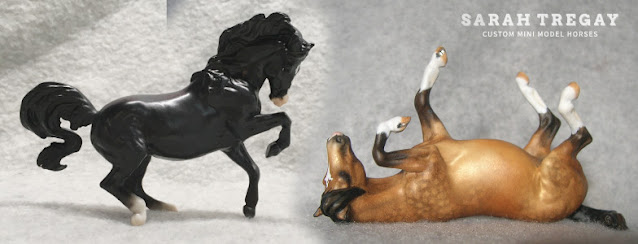I've seen some great hobby posts on social media, from sculpting a beautiful model in oven-baked clay (instead of hobby-norm-two-part-epoxy), to building a barn from scratch (inspired by a hobbyist who lives in another country), to collecting carts and harnesses of all types (not just competitive, live show quality ones), to creating a custom model just for the fun of it (not for show nor sale).
I love the creativity. I love the way these people are embracing the "hobby" part of The Hobby. I think we could all learn from them.
 |
| Some of my Albys |
After attending Breyerfest, doing pick-ups for friends, selling at Artisan's Gallery, and showing in the open show this summer, I could use a deep breath. I could use a little time and space to enjoy the hobby as a hobby. I need to remind myself of the following:
- Not everything is a competition. Sometimes attending an event is about seeing old friends and meeting new people.
- Not everything is a business venture. Sometimes it's about creating something for myself.
- Not everything is about money/value/price or buying the latest model. Sometimes it's about enjoying my collection or creating something new from something old.
I have many ongoing personal projects. Two projects that I am sharing on my website (sarahtregay.com) are my customizing every Stablemate mold and painting a Stablemate Alborozo in every horse coat color. The first is a project that I'll never truly finish... there will always be new molds and the second has lots of opportunities to learn about genetics and painting techniques.
 |
| My Stablemate molds custom project. |
Maybe now is a good time to be inspired by positive social media posts and embrace a personal project. What are you enjoying right now?
Comments
Post a Comment